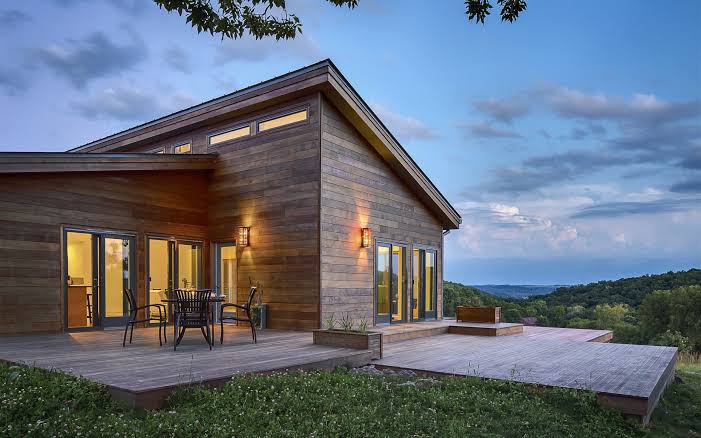7 Days Annapurna Base Camp Trek Itinerary vs. Langtang Valley Trek :
Introduction to the Treks
Annapurna Base Camp Trek
The Annapurna Base Camp trek is a universally eminent path, driving trekkers into the heart of the Annapurna Haven, encompassed by towering Himalayan crests like Annapurna I (8,091m) and Machapuchare (6,993m). This trek combines staggering common magnificence with social experiences, advertising an assortment of scenes extending from rich rhododendron woodlands to high-altitude snowcapped zones.
Langtang Valley Trek
Often alluded to as the “Valley of Ice Sheets,” the Langtang Valley trek lies north of Kathmandu and offers an off-the-beaten-path involvement. It’s celebrated for its peaceful scenes, snow-capped crests, and the Tamang and Sherpa societies. Langtang Lirung (7,227m) overwhelms the horizon, and the trek highlights differing territories, from bamboo forests to high-altitude meadows.
Length and Accessibility
Annapurna Base Camp Trek
Duration: Ordinarily takes 7–10 days, with the 7-day schedule being a fast-paced option.
Accessibility: Starts with a drive or flight from Kathmandu to Pokhara, taken after by a brief drive to the trailhead (e.g., Nayapul or Ghandruk).
Ease of Getting to: Well-developed with simple transport choices and teahouses at customary intervals.
Langtang Valley Trek
Duration: Takes 7–9 days, depending on the pace and itinerary.
Accessibility: Begins with a 6–7 hour drive from Kathmandu to Syabrubesi, the trek’s beginning point.
Ease of Getting to: Less created than ABC, with fewer transport choices and fundamental offices in a few areas.
View and Terrain
Annapurna Base Camp Trek
Scenery: Offers unparalleled views of Annapurna, Dhaulagiri, and Machapuchare. The scenes incorporate terraced farmlands, bamboo timberlands, waterfalls, and glaciers.
Terrain: Direct trails with a few steep climbs and plunges. The differences in scenes are a highlight.
Langtang Valley Trek
Scenery: Highlights incorporate the Langtang Lirung icy mass, wandering waterways, rich timberlands, and sweeping elevated knolls. Spring includes bursts of color with rhododendron blooms.
Terrain: Simpler slopes compared to ABC, but trails may feel inaccessible and rough in places. The valley opens up to fabulous vistas.
Social Experience
Annapurna Base Camp Trek
Communities: Fundamentally domestic to Gurung and Magar individuals, advertising impressions into their wealthy culture and traditions.
Cultural Highlights: Stops like Ghandruk town include historical centers and neighborhood move performances.
Accommodation: Well-established teahouses with better-than-average civilities, counting Wi-Fi in a few locations.
Langtang Valley Trek
Communities: Overwhelmed by Tamang and Sherpa societies, intensely impacted by Tibetan traditions.
Cultural Highlights: Openings to visit cloisters like Kyanjin Gompa and connect with local people, who are known for their warmth.
Accommodation: Less complex teahouses, reflecting the region’s remoteness. Anticipate essential facilities.
7-Day Annapurna Base Camp trek Itinerary:
The 7 days Annapurna Base Camp trek, also known as the Annapurna Haven trek, is a condensed trek that takes trekkers into the heart of the Annapurna range. Here’s an ordinary 7-day itinerary:
Day 1: Drive from Pokhara to Jhinu Danda and trek to Chhomrong (2,170m)
Start with a picturesque 2-hour drive from Pokhara to Jhinu Danda. Start the trek with a slow rising through terraced farmlands and thick timberlands. Arrive in Chhomrong, a dynamic Gurung town advertising the, to begin with, major sees of Annapurna South and Machapuchare.
Highlights: To begin with, impressions of the towering Annapurna extend, and the warm neighborliness of Chhomrong villagers.
Day 2: trek from Chhomrong to Bamboo (2,310m)
Descend to the Chhomrong Khola and cross a suspension bridge; some time recently, I started a steep climb to Sinuwa. From there, the path enters a thick woodland of bamboo, rhododendron, and oak. Reach the quiet town of Bamboo.
Highlights: Verdant woodland trails and a quiet vibe in Bamboo.
Day 3: trek from Bamboo to Deurali (3,230 m)
The path continuously rises through woodlands and open pastures. Pass through Dovan and Himalaya towns some time recently, coming to Deurali, where you’ll take note of a move in the scene to more elevated terrain.
Highlights: The sensational altar in view and closer views of the snow-capped peaks.
Day 4: trek from Deurali to Annapurna Base Camp (4,130m) through Machapuchare Base Camp (3,700m)
A challenging, however fulfilling, day. Climb to Machapuchare Base Camp (MBC), where trekkers are treated to all-encompassing views of the Annapurna and Gangapurna ranges. Proceed to ABC, a normal amphitheater encompassed by towering peaks.
Highlights: Coming to ABC and dousing in 360-degree views of Annapurna I, Annapurna South, Machapuchare, and other peaks.
Day 5: Plummet from Annapurna Base Camp to Bamboo (2,310m)
Retrace your steps to Bamboo. The plummet offers a chance to appreciate the changing scenes and the quiet timberland environment.
Highlights: Following beautiful trails and returning to the lavish vegetation.
Day 6: trek from Bamboo to Jhinu Danda (1,780 m)
Trek through Sinuwa and Chhomrong some time recently, plummeting to Jhinu Danda. Appreciate an unwinding plunge in the normal hot springs close to the village.
Highlights: The alleviating hot springs and the inviting town atmosphere.
Day 7: trek from Jhinu Danda to Nayapul and Drive to Pokhara
A brief and simple trek to Nayapul through terraced areas and towns. Conclude the trek with a drive back to Pokhara.
Highlights: The final impressions of the Annapurna locale and a sense of accomplishment.
Trouble and Altitude
Annapurna Base Camp Trek
Difficulty: Direct. Whereas the trails are well-marked, the fast height pick-up can be challenging for some.
Highest Point: Annapurna Base Camp at 4,130m.
Altitude Dangers: AMS (Intense Mountain Ailment) is a potential hazard but reasonable with legitimate acclimatization.
Langtang Valley Trek
Difficulty: Direct to simple, with slow climbs and fewer soak areas. Perfect for beginners.
Highest Point: Kyanjin Ri (4,773m) or Tserko Ri (5,000m) for those who pick side hikes.
Altitude Dangers: Lower hazard of AMS due to progressive rise pick up, but side climbs require caution.
Natural Life and Normal Features
Annapurna Base Camp Trek
Flora and Fauna: Passes through the Annapurna Preservation Zone, home to the Himalayan thar, langurs, and a variety of fowl species. Rhododendron woodlands rule in spring.
Unique Highlights: The trek leads to a common amphitheater encompassed by crests. Hot springs in Jhinu Danda are a bonus.
Langtang Valley Trek
Flora and Fauna: Falls inside Langtang National Stop, wealthy in biodiversity, counting red pandas, snow leopards, and Himalayan pheasants.
Unique Highlights: Icy mass seas and the perfect Langtang Waterway include the trek’s allure.
Swarms and Atmosphere
Annapurna Base Camp Trek
Popularity: Profoundly prevalent, meaning trails and teahouses can be swarmed amid crest seasons (spring and autumn).
Atmosphere: Social and enthusiastic, with trekkers from around the world.
Langtang Valley Trek
Popularity: Less swarmed, advertising a peaceful and immersive experience.
Atmosphere: Calm and quiet, with fewer trekkers on the trails.
Taken a toll comparison
Annapurna Base Camp Trek
Cost: Marginally higher due to well-developed offices and the nearness to Pokhara, a visitor hub.
Permits: Incorporates an Annapurna Preservation Region Allow (ACAP) and a TIMS card, costing around $40–50 in total.
Langtang Valley Trek
Cost: Moderately lower, as the zone is less commercialized.
Permits: Langtang National Stop Allow and TIMS card, too, around $40–50 in total.
Best Time to Visit
Annapurna Base Camp Trek
Best Seasons: Spring (March-May) for rhododendron sprouts and harvest time (September-November) for clear skies.
Winter and Rainstorm: Winters are cold, with overwhelming snowfall at higher elevations; storms bring dangerous trails and diminished visibility.
Langtang Valley Trek
Best Seasons: Compared to ABC, spring and harvest time are ideal.
Winter and Rainstorm: Winters are sensible with appropriate equipment, and storms bring lavish greenery but chance landslides.
Key Highlights
- Annapurna Base Camp Trek
- Reaching the famous base camp encompassed by 360-degree mountain views.
- Soaking in normal hot springs at Jhinu Danda.
- Cultural experiences in towns like Ghandruk and Chhomrong.
Langtang Valley Trek
- Exploring Kyanjin Gompa and the glaciers.
- Side treks to Kyanjin Ri or Tserko Ri for all-encompassing vistas.
- Authentic social encounters in farther Tamang villages.
Conclusion
Both treks offer special encounters and cater to distinctive preferences:
Choose the Annapurna Base Camp trek if you’re looking for a blend of breathtaking mountain vistas, social abundance, and a well-developed framework. It’s perfect for those who need a marginally challenging but fulfilling Himalayan adventure.
Opt for the Langtang Valley trek if you favor isolation, untainted scenes, and a social submersion in a less commercialized locale. This trek culminates for those looking for tranquility and an association with nature.
Both are exceptional ventures, guaranteeing you’ll take off with cherished recollections of the Himalayas.
Contact Us Nepal High Trek For More Info
Nepal High Trek And Expedition Pvt. Ltd. is an authentic local trekking company based in Kathmandu, Nepal, specializing in multi-day tours, treks, climbing and other related activities for solo travelers and private groups. You can contact us at info@nepalhightrek.com or via WhatsApp at +9779851142116.






